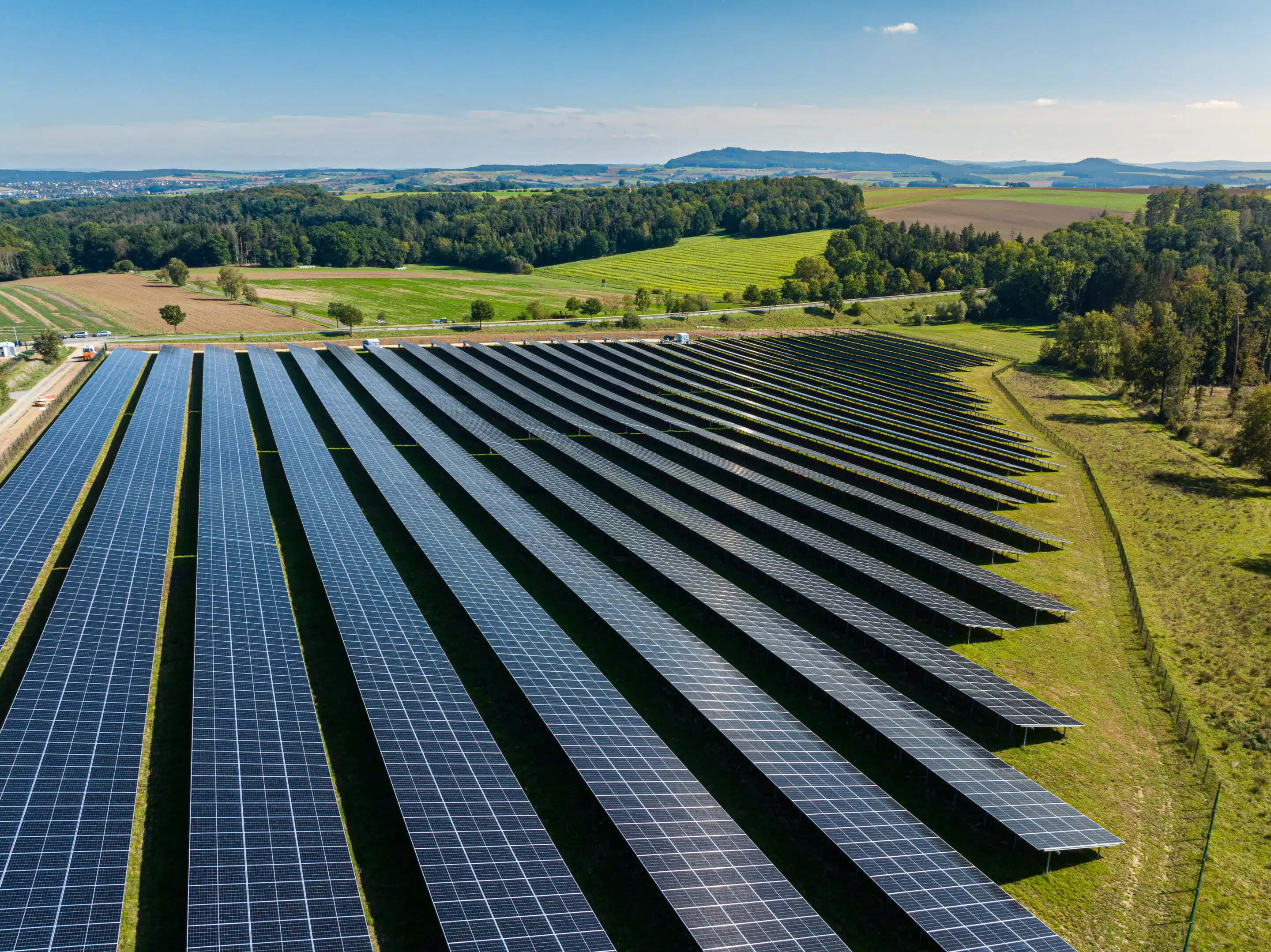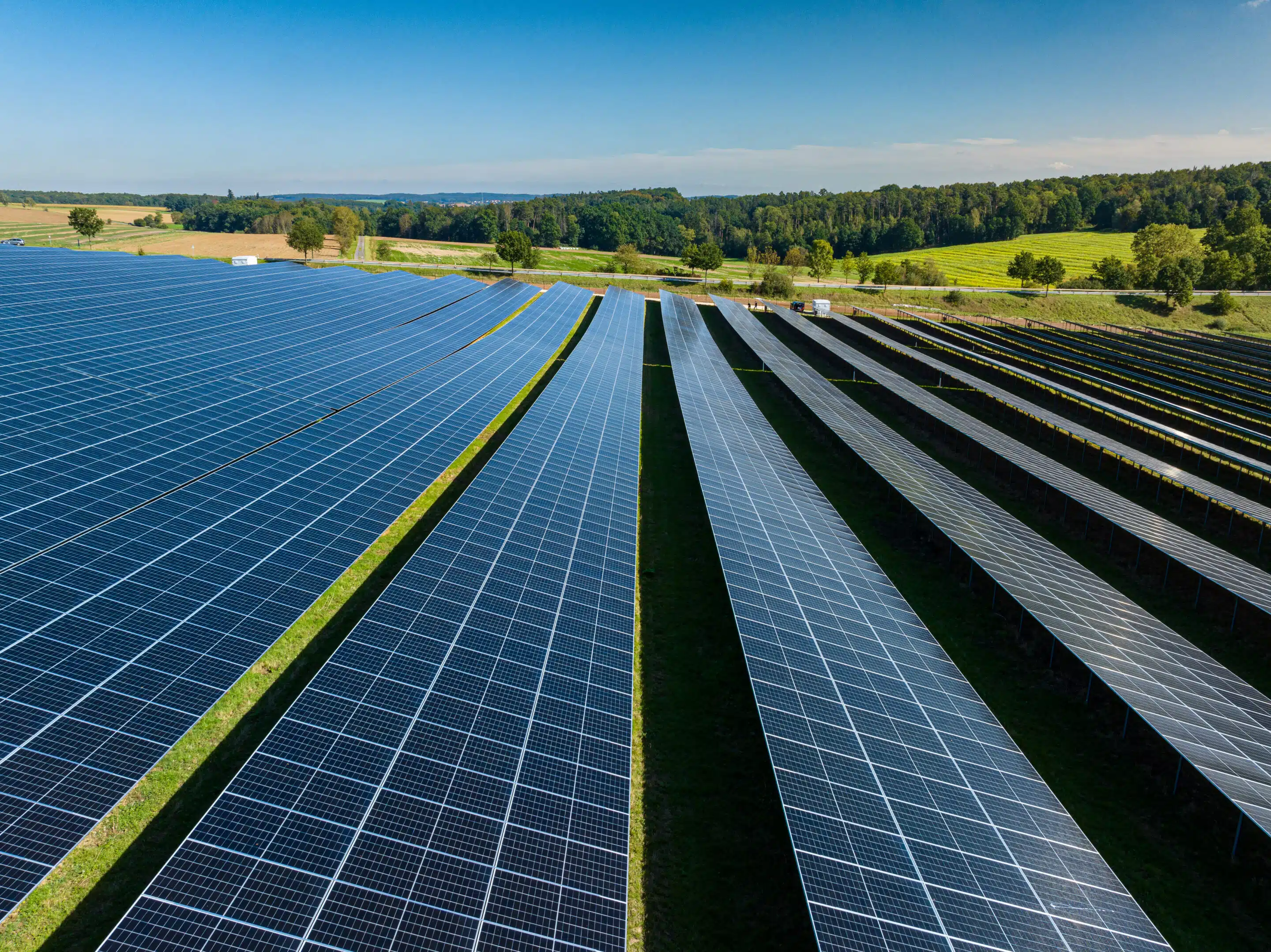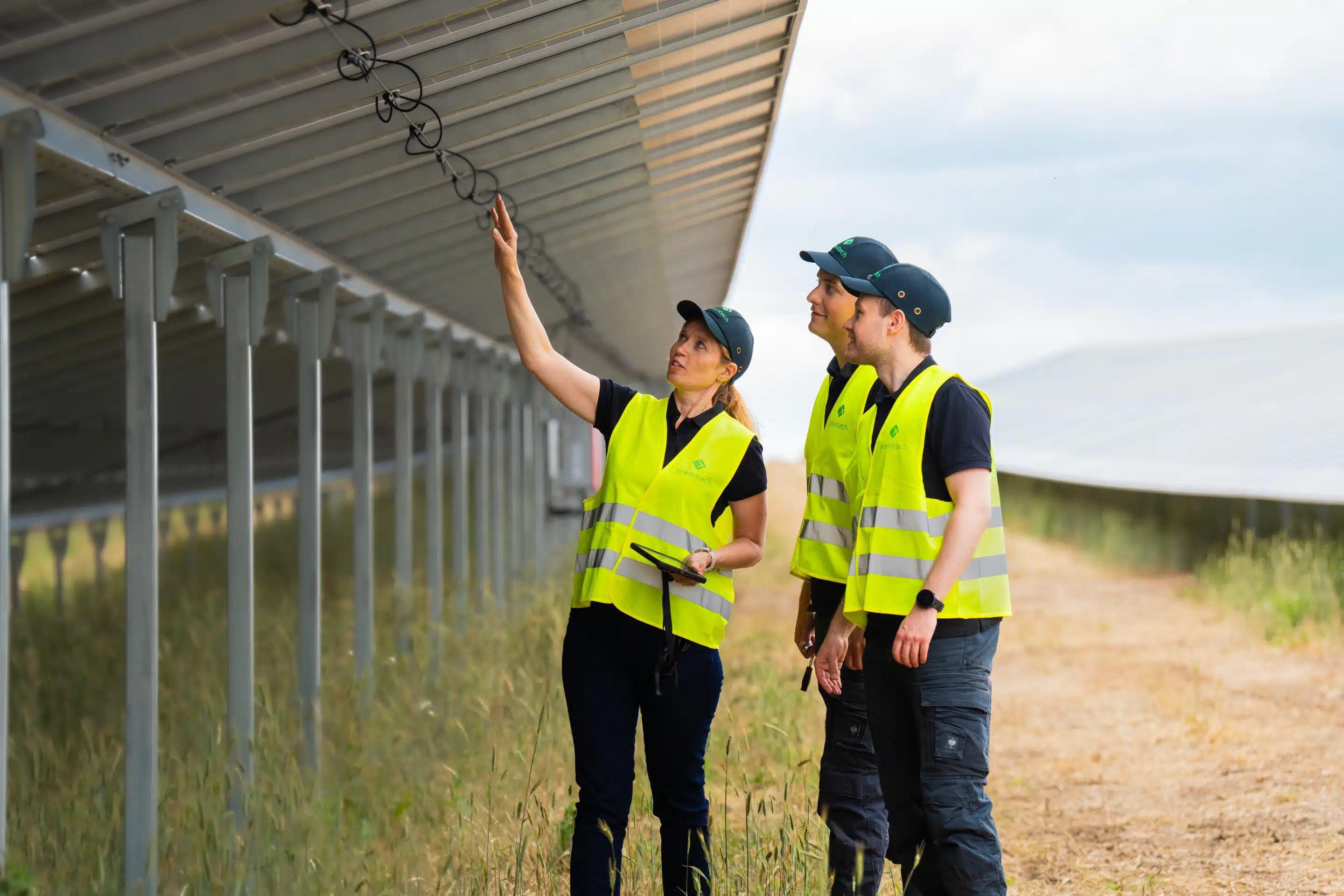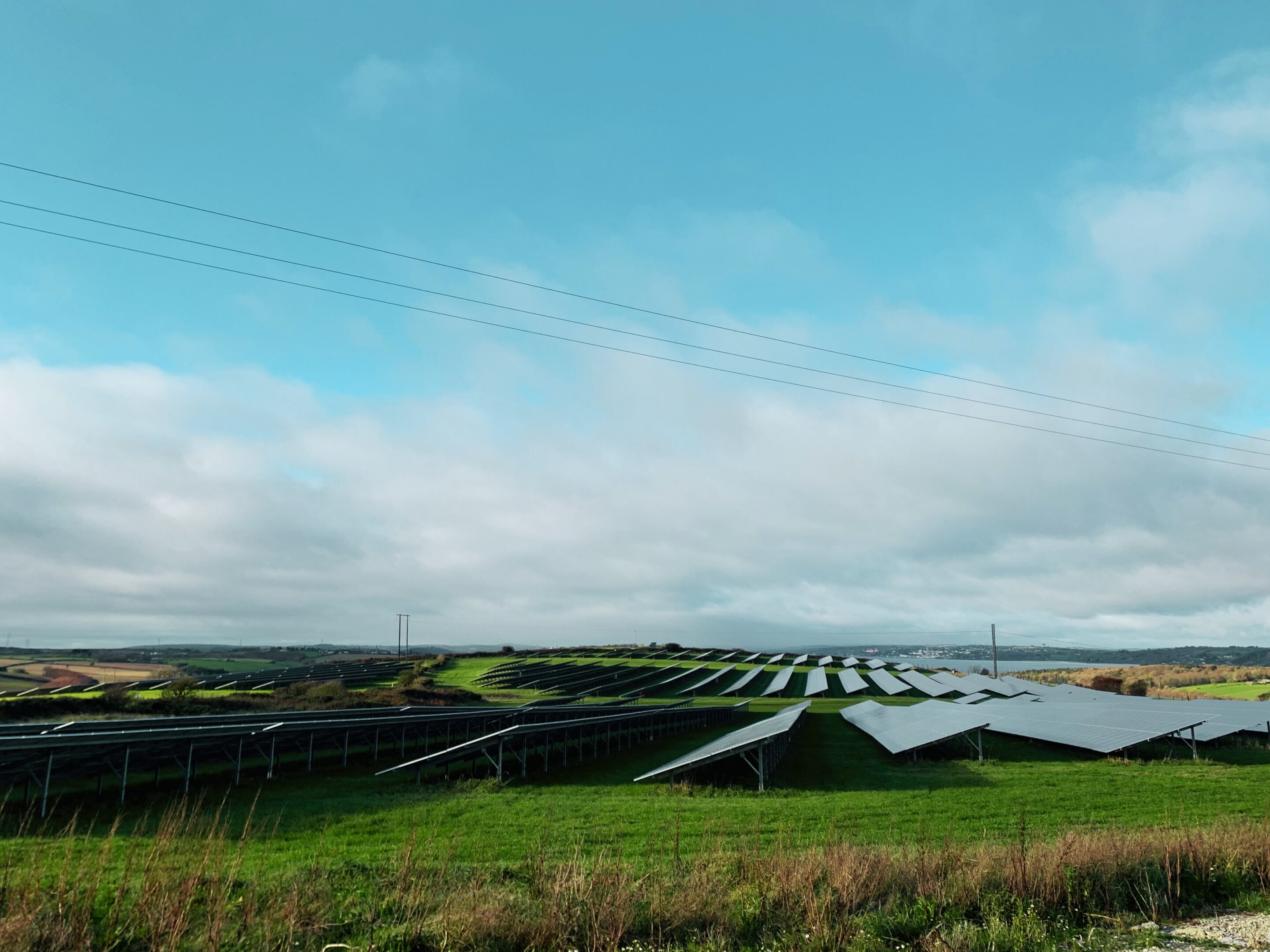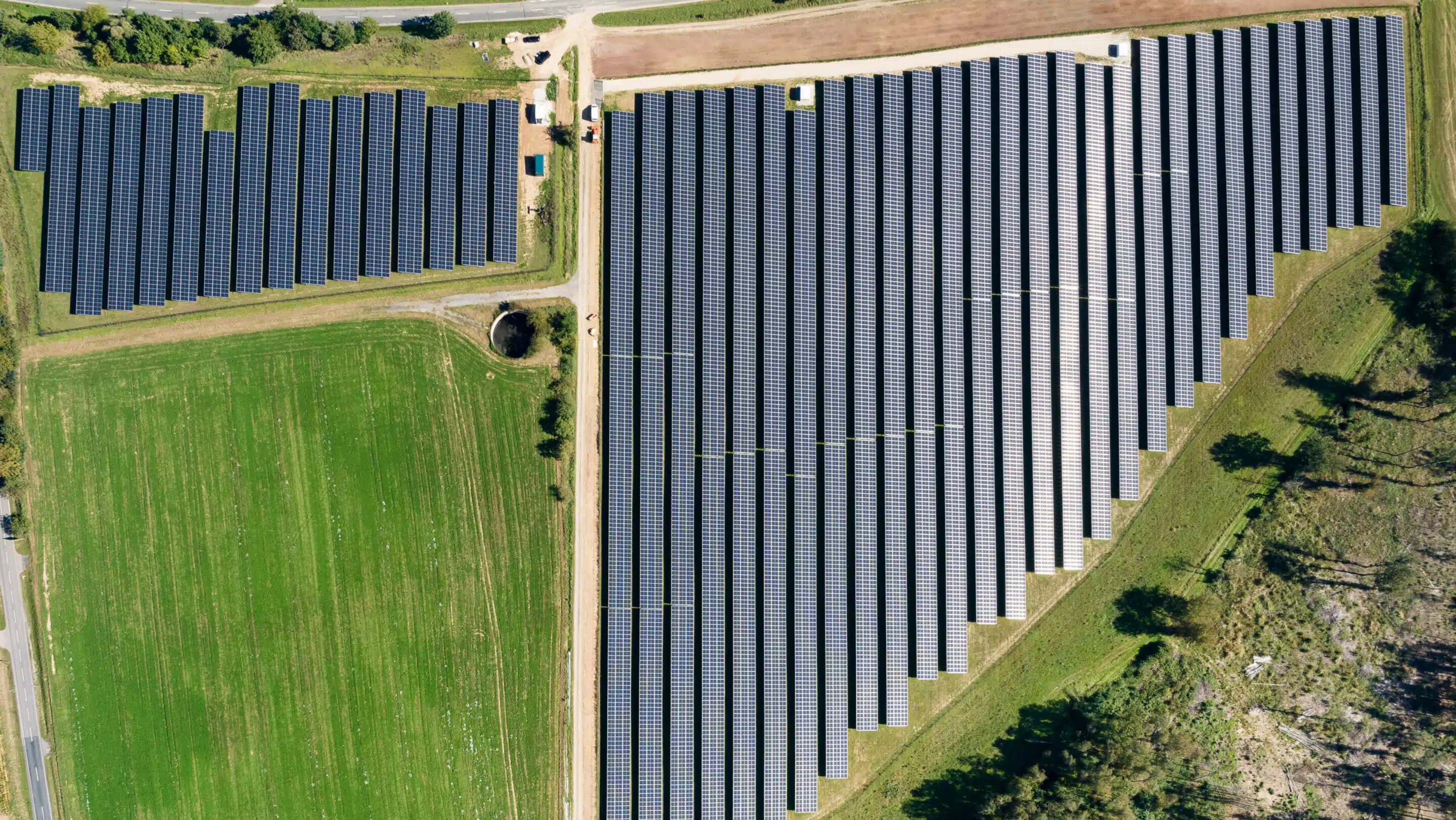Interview with Jörn Carstensen, Managing Director at greentech and Dr.-Ing. Michael Jordan, CTO at morEnergy about the collaboration between the two companies and the energy transition.
Mr. Carstensen, Mr. Jordan, thank you very much for taking the time today. Please tell us why and how the cooperation between greentech and morEnergy came about.
Carstensen: greentech is a fully integrated PV company and, in the service provider sector, takes care of the technical and commercial operational management and engineering of photovoltaic systems. The topic of power quality of the grids is therefore of great relevance to us in order to ensure good performance and high quality of the plants we manage. Time and again, we see defects or excessive wear on components whose exact causes cannot be clearly determined. Against this background, we wanted to make the situation of PV systems on the grid more transparent. The idea for the new products arose from many joint discussions with morEnergy as power grid specialists. Together, we developed two approaches to high-frequency power quality analysis. With them, we can individually check the existing power quality and possible resulting effects on the plant and, based on this, improve it with targeted measures. Often, the reason for a plant’s misbehaviour is only due to a poorly dimensioned filter.
Jordan: The special thing about our joint offer is that we can measure voltages, currents and impedances in higher frequency ranges up to 150 kHz in the maximum case with our ONIS technology and in this way precisely identify sources of error. Every installation leaves a common “imprint” in the network. This has a great influence on the network impedance. If this imprint appears unusual, it is possible with our ONIS measuring device to find out the causes and to give recommendations for action to eliminate anomalies. We are convinced that in greentech we have found a strong partner who understands our ONIS technology and can also apply it in practical applications. Of course, we are also available as consultants with our engineering expertise.
What does your collaboration look like in particular and how do you proceed with the measurements?
Carstensen: Our greentech service technicians use the ONIS measuring device to collect specific parameters on the network quality directly at the plant. The data is transmitted to morEnergy for analysis and evaluated there by the grid specialists. The customer receives a report in which, in addition to the results of the analysis, specific options for improving the plant situation on the grid are shown.
Jordan: We offer two different analysis approaches: The Power Quality Check (PQ Check) and the Electrical Fingerprint. We offer the Electrical Fingerprint to determine the given condition values at the beginning of a plant’s life, when the plant is still new and without wear. If the measurements are now repeated every 2-3 years, it can be clearly seen whether and where there is wear and tear or whether external influencing factors of the network from the immediate surroundings are having an effect on the plant. Aging and malfunctions of photovoltaic systems become clearly visible in this way. In the end, the added value for the plant owner is clear documentation that he can use to sell the plant at a higher price. Or he can proactively prevent certain damages and thus ensure the best possible performance of the plant right from the start.
Carstensen: If a system has been exhibiting problems for a long time or has recently become conspicuous, we use the PQ check to determine whether network-related faults could be the cause. For this reason, all three phases of the network are alternately measured during operation in an active procedure. This allows anomalies or excessive loads to be identified as quickly as possible under real conditions. And this is important, because they cannot only disturb the stability of the system “photovoltaic plant” and thus provoke failures or emergency shutdowns, but also – as in cases also known to us – lead to significant power limitations of the plant in the long term.
Isn’t an inspection of the system required by law or by certain standards anyway?
Jordan: At present, there are no legal regulations that prescribe a consideration of higher frequency ranges. Systems must pass the DGUV V3 tests, and there are the VDE Technical Rules for the Assessment of Network Reactions. Unfortunately, these technical rules only insufficiently consider high-frequency system perturbations. To summarize in one sentence, it can be said that the regulation of power grids still lingers in the 20th century, when people relied on large and centralized power plants that fed in their electricity at 50 Hz and managed without inverter technologies.
Where do you see your companies in 2030? What are their immediate goals?
Carstensen: In recent years, we have evolved from a pure service provider to a fully integrated PV player. From project development to plant construction, financing to commercial and technical operation as well as ongoing optimization, we cover the entire downstream value chain of photovoltaics. This enables us to think and act in a very networked manner and across all stages of the value chain. This allows us to incorporate experience from operations management as early as the planning and construction phase. The topic of network quality fits in perfectly here. If this aspect is considered right from the start, there will be fewer outages and more reliable, higher yields later on. We want to continue on this path consistently and develop, build and operate many projects that have the lowest electricity generation costs due to their quality.
Jordan: We want to become even more digital and are developing more and more into the digital space. Furthermore, we want to have established morEnergy as the brand around electrical grids, which there is no way around when there are problems or questions about these very grids.
The energy turnaround is generally regarded as a success story, but with the stigma of the highest electricity prices in all of Europe. What can technology companies like yours do to make the energy transition more socially acceptable?
Carstensen: Part of the high electricity prices in Germany is due to a levy based on the Renewable Energy Sources Act. Operators of plants that produce electricity from renewable energies and feed the electricity into the grid receive a fixed remuneration. In the early days of commercial use of renewable energies, this form of levy financing was chosen to help the technologies get off the ground. However, this remuneration is higher than the revenue that the grid operators can achieve by selling the electricity on the electricity exchange. The difference is made up by the levy that all electricity customers must pay in addition to the electricity tariff. Compared to other support mechanisms, which are mostly financed through taxes, this form of levy is indeed not balanced and socially fair. Fortunately, politicians are now beginning to rethink this. However, the subsidy as such was necessary and very successful. Today, wind and solar power plants can produce electricity below wholesale prices and can thus be operated economically without subsidies. In the long term, renewable energies will stabilize, if not reduce, electricity costs. And it will make us less dependent on fossil fuels – not to mention the positive impact on the environment and climate.
Jordan: From our point of view, digitizing the power grids will lead to greater acceptance of the energy transition. If grid utilization can be determined in real time and ideally even controlled, unnecessary capacities will not be built up at all and the energy transition will become more affordable.
What would you like to see from politicians?
Carstensen: With a few exceptions, I think the last politician has now understood the role that renewable energies play in ensuring a reliable, cost-effective and climate-friendly power supply. The task now is to work together with politicians, public authorities and the private sector to systematically expand this path. In the future, we will no longer need subsidies for worthwhile investments in photovoltaic systems, but rather reliable planning processes, a strong grid expansion and clear grid connection conditions in order to quickly move closer to the goal of 100% renewable energies.
Jordan: All in all, I feel that energy policy already plays a big role. What’s important to me as a businessman is a predictable, reliable policy that’s not just focused to one election period but also beyond.
Thank you very much for the interview!


